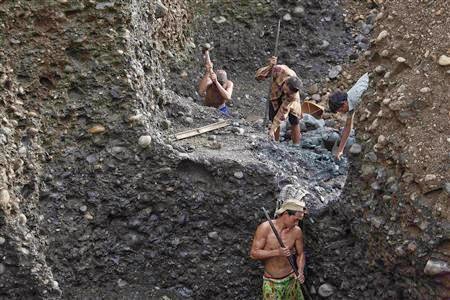“Hpakant is where Satan slowly called me to hell.”
--La Htoi, 34-year-old jade broker and recovering heroin addict
On Sunday the New York Times published this harrowing story and accompanying video.
Searching for Burmese Jade, and Finding Misery
Video Feature: Jade’s Journey Marked by Drugs and Death
There are other incredibly good (and disturbing articles on the Myanmar/Chinese jade trade, and the Hpakant mines in the northern Kachin state; this is not a new issue. I try to stay focused on Aceh and Indonesia, and look towards Myanmar only when I’m alerted to some new and hideous thing the government (or group of monks bent on ethnic cleansing) does to further imperil the Rohingya. But this article convinced me that justice for the Rohingya is far, far in the distance. Again, another minority is abused and abandoned. Miners are encouraged to use heroin to work multiple shifts and steel themselves to the backbreaking labor, and of course become addicted, losing all their income. Government officials turn a blind eye to the overt drug trade in and near the mines—the price of jade, after all, has skyrocketed in recent months due to increased demand by China’s middle class. The article quotes a Myanmar health professional as reporting that there is no technology to manufacture heroin in Myanmar; it is coming directly from China, which has the most to gain from the mines’ jade production.
Reuters
The
article reports that the majority of profits, which should be making the
Myanmar government wealthy, “remain
in control of elite members of the military, the rebel leaders fighting them
for greater autonomy, and the Chinese financiers with whom both sides collude
to smuggle billions of dollars’ worth of the gem into China . . . . Such
rampant corruption has not only robbed the government of billions in tax
revenue for rebuilding after decades of military rule, it has also helped finance a bloody ethnic
conflict and unleashed an epidemic of heroin use and H.I.V. infection among the Kachin
minority who work the mines.”
Myanmar has no viable substance abuse treatment or methadone programs and no street outreach for IV drug users.
“At a
time when Myanmar is experimenting with democratic governance after nearly 50
years of military dictatorship, its handling of the jade industry has become a
test of the new civilian leaders and their commitment to supporting human
rights and rooting out corruption, as well as an early check on whether they
will reject the former junta’s kleptocratic dealings with China.
So far, experts say, they have failed.”
So,
how do we think the Rohingya will fare, with Myanmar’s treatment of the Kachin
as an example?
“The
government says it keeps [Mitkyia, the capital of Kachin] closed because of sporadic
fighting with the Kachin rebel army, but activists see a darker purpose: to
hide the illegal jade and drug trades flourishing there. The only foreigners
allowed past the military checkpoints, they say, are the Chinese who run the
mines or go there to buy gems.”
And
not to get sidetracked, but doesn’t this sound eerily like Big Palm as well as
the subject of a future blog, the Freeport copper mine in Papua?
As the
article concedes, no one smells completely like a rose in the Kachin state. The
Kachin rebels (K.I.A.) extract a 50% payoff from companies to run the mines,
and as far as I know do little to ease the suffering of their fellow countrymen
working there. They also work with
Chinese companies to smuggle jade through the jungle into China. “Yet the fighters’ spoils pale in comparison
to those enjoyed by the powerful
Burmese military elite, whose companies receive the choicest tracts of
mining land from the government, according to miners and international rights
groups. Like the K.I.A., some military officers are also involved in smuggling,
extracting bribes to allow the illicit practice, activists say.
“The
top dogs are the Burmese military,” a representative of Global Witness, reports.
So
now, in Myanmar, the government, eager to be seen as pro-democratic, pro-little
guy (except of course for the Rohingya) as possible, is now denying that smuggling
is a major problem, or that heroin use is widespread, even condoned, at mine
sites, even though it is losing billions a year in revenue and “a sizable
majority of Kachin youths are addicts. The World Health Organization has said
about 30 percent of injecting drug users in Myitkyina have contracted H.I.V.”
Some
anti-drug activists believe the government is distributing heroin to weaken the
ethnic insurgency, with the military allowing pushers past their checkpoints.
“Heroin is their weapon,” he said.
The article
lays most of the blame at the doorstep of China, with its unquenchable thirst
for jade and the greed of its businessmen invested in the mines. Much as I would like to join the party, I
cannot see why this tragedy does not need to be addressed by the Myanmar
government itself. It sure hasn’t shown
that it cares about protecting its citizens.
It’s losing money on the mine so the continuous flow of wealth isn’t the
issue. I’m beginning to think that even
with this new, hopeful government, no one really gives a crap. I wonder if they will change their tune when
Myanmar has a higher HIV rate than southern Africa. By then it will be too
late. HIV will not stop at ethnic
borders. The country is in peril.

No comments :
Post a Comment